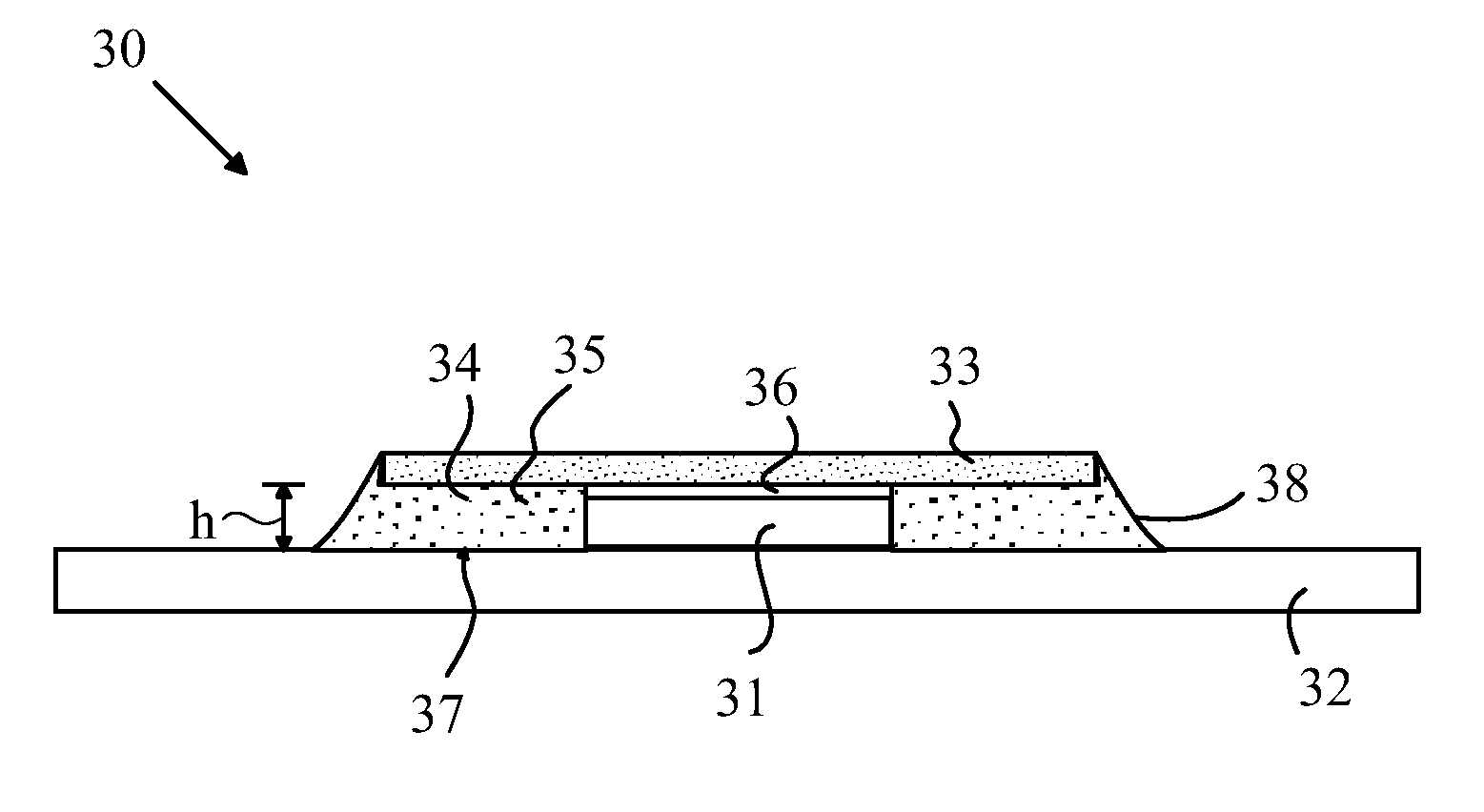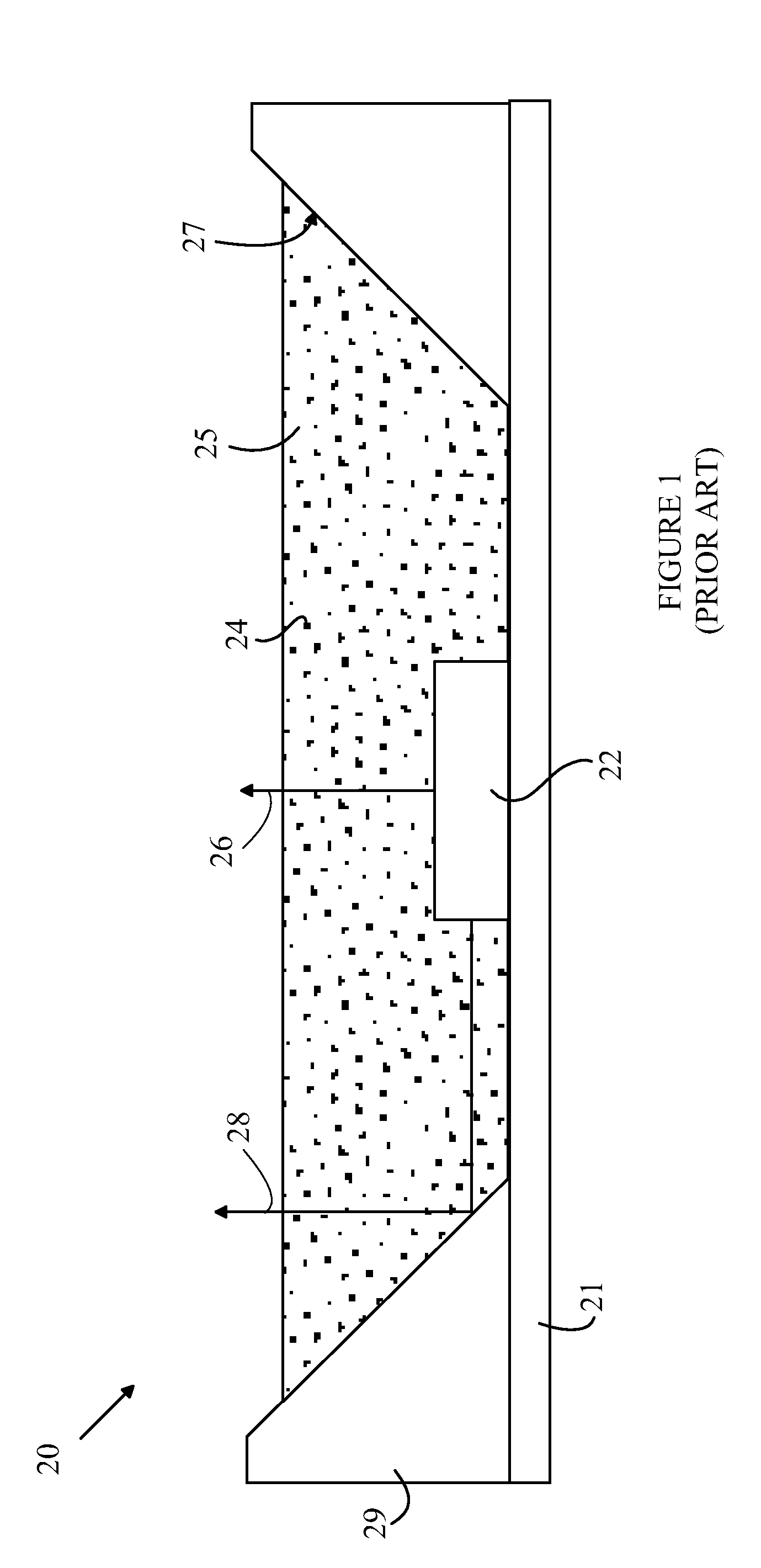Phosphor-Converted LED
a technology of phosphor and led light, which is applied in the direction of semiconductor devices, semiconductor/solid-state device details, electrical equipment, etc., can solve the problems of increasing packaging costs, light in a relatively narrow spectral band, and increasing the cost of packaging dies
- Summary
- Abstract
- Description
- Claims
- Application Information
AI Technical Summary
Benefits of technology
Problems solved by technology
Method used
Image
Examples
Embodiment Construction
[0017]The manner in which the present invention provides its advantages can be more easily understood with reference to FIG. 1, which is a cross-sectional view of a typical prior art phosphor converted LED source 20. A light emitting semiconductor die 22 containing an LED is mounted within a cavity on a substrate 21. The LED is powered by contacts on the bottom side of die 22 that are connected to corresponding conductors on substrate 21. To simplify the drawing, the connections between die 22 and the conductors on substrate 21 have been omitted.
[0018]Light source 20 includes a cup 29 having reflecting sides 27. Cup 29 can be generated by boring a conical hole in a layer of material that is then bonded to substrate 21 after the walls of the hole are coated with a reflecting material. The cup is typically bonded to substrate 21 before die 22 is connected to substrate 21. However, embodiments in which the cup is created by boring a conical recess in substrate 21 are also known to the ...
PUM
 Login to View More
Login to View More Abstract
Description
Claims
Application Information
 Login to View More
Login to View More - R&D
- Intellectual Property
- Life Sciences
- Materials
- Tech Scout
- Unparalleled Data Quality
- Higher Quality Content
- 60% Fewer Hallucinations
Browse by: Latest US Patents, China's latest patents, Technical Efficacy Thesaurus, Application Domain, Technology Topic, Popular Technical Reports.
© 2025 PatSnap. All rights reserved.Legal|Privacy policy|Modern Slavery Act Transparency Statement|Sitemap|About US| Contact US: help@patsnap.com



